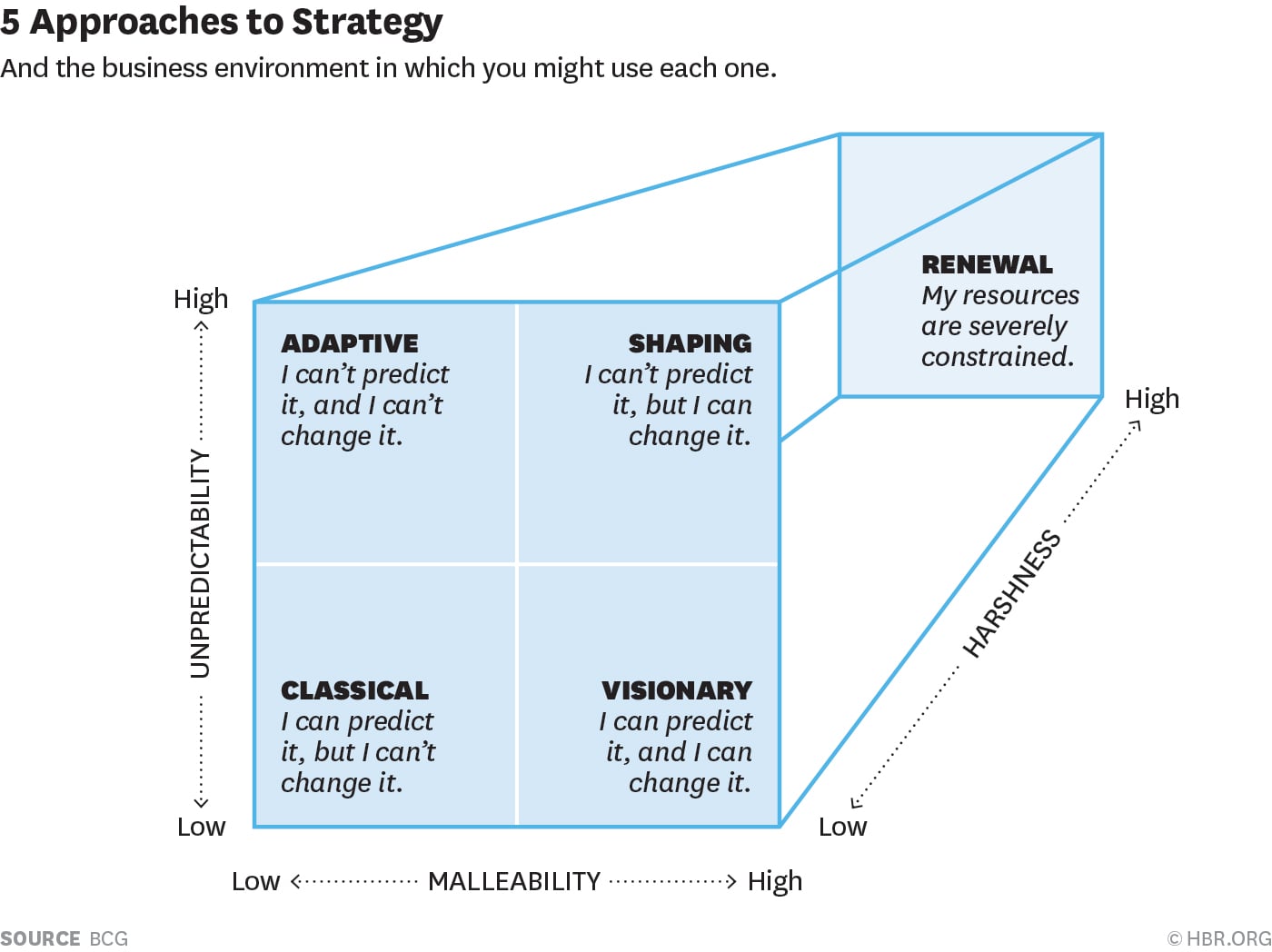
The Briefest Guide to Small Business Strategy
On the topic of small business strategy, many of you know what it is and how to implement them. So, I have tasked myself with creating the simplest guide to small business strategy by explaining 5 essential approaches to strategy in the quickest way possible — dot points!
Every small business environment is different and each can be conquered with a certain small business strategy. Here are 5 important approaches to strategy to consider:
- Classical: Be big.
- Adaptive: Be fast.
- Visionary: Be first.
- Shaping: Be the orchestrator.
- Renewal: Be viable.
Classical: Be big
- Most familiar strategy. Taught in business schools.
- Believe that the world is predictable, competition is stable, and advantage is sustainable.
- Involves dog-eat-dog competition and red ocean strategies where firms seek to position themselves optimally within their market.
- Positioning is based on superior size, differentiation, or capabilities. Achieving all is extremely difficult.
- Brief strategy process:
- Analyse competitive advantage and the fit between firm’s capabilities and the market, and forecast how these will develop over time.
- Design a plan to build and sustain advantageous positions, and execute it efficiently.
Adaptive: Be fast
- Business environment is neither predictable nor flexible.
- Predictions are difficult to make, and advantages are short-lived.
- Only defence against continuous disruption is readiness and adaptability.
- Winning comes from constantly experimenting and identifying newer options faster than others.
- Less analysing, predicting, and optimising.
- Brief strategy process:
- Success through experimentation.
- Vary your approach and create a range of strategic options to test
- Select the most successful ones to scale up and exploit.
- When the environment changes, rapidly repeat the process in order to find the most advantageous option, and renew the advantage.
Visionary: Be first
- About imagination, realisation, and creativity.
- Win by being the first to introduce a revolutionary new product or business model.
- Look to create a new market segment or disrupt an existing one.
- Can be the first to apply a new technology, or identify and address a significant consumer dissatisfaction or need. Can even create a new need!
- Also, can innovate to revitalise an old industry business model, or recognise a trend before others.
- Brief strategy process:
- Envisage a valuable possibility that is achievable.
- Be the first to build it.
- Persist in executing and scaling the vision to its full potential.
Shaping: Be the orchestrator
- Environment is unpredictable but mouldable.
- Shape or reshape an entire industry in its early stages of development.
- Need to collaborate with others, share the risk, contribute capabilities, and build the new market before competitors mobilise.
- Rely on collaboration more than competition.
- Brief strategy process:
- Engage stakeholders with a shared vision.
- Build and evolve a platform which collaboration can be orchestrated, by scaling and maintaining its flexibility and diversity.
Renewal: Be viable
- Aims to restore the vitality and competitiveness of a small business in a harsh environment.
- Can be caused by a mismatch between the small business’s approach to a strategy and its environment, or by an external or internal shock.
- Need to change the way of doing business, if the current one continues to fail.
- Business strategy process:
- Recognise and react to the deteriorating environment ASAP, by restoring your viability: refocusing the business, cutting costs, preserving capital, essentially freeing up resources for the next chapter of your small business.
- Look to one of the other four strategies to rebuild the business’s advantages.
Based on: Reeves S., Haanaes k., & Sinha J. (2015). “Your Strategy Needs A Strategy: How to Choose and Execute the Right Approach”. Harvard Business Review.

